Navigating yarn quantities for beanie projects can be tricky; read on to get comprehensive insights because understanding measurements can make your crocheting experience smoother and more enjoyable.
When it comes to crocheting a beanie, the amount of yarn required can vary depending on factors such as the yarn thickness, the size of the beanie, and the stitch pattern used.
Generally, for an adult-sized beanie using medium weight yarn and a basic stitch pattern, you will need approximately 150 to 200 yards of yarn.
However, for a more detailed breakdown, including variations for different sizes, yarn types, and stitch patterns, continue reading for a comprehensive guide.
This article will provide you with all the necessary information you need to calculate the exact amount of yarn required for your specific beanie project.
- Opt for wool, acrylic, or cotton yarn based on preferences and allergies.
- Thin yarns create intricate weaves, thick yarns create warm hats.
- Refer to a crochet hat size chart for accurate yarn quantities.
- Consider using chunky yarn for chunky beanies.
- Different stitches impact yarn usage, track yarn used for each row.
Choosing the Right Type of Yarn for Your Beanie
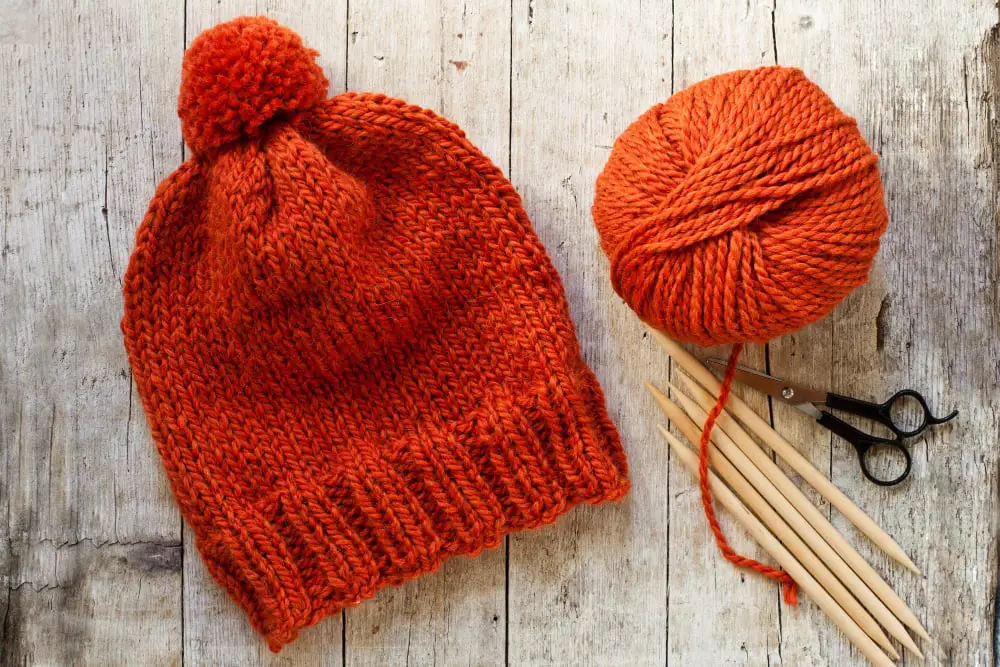
Opting for the correct yarn is crucial as it impacts the overall look, texture, and warmth of your beanie. Wool yarns, owing to their natural warmth and elasticity, are highly sought after for beanies. However, if you are allergic to wool, you could opt for soft acrylic or cotton yarns.
Consider the weight of the yarn; a light-weight yarn such as lace will create a delicate, airy beanie, whereas a chunky yarn results in a warm, dense hat. If you’re in a colder region, a thick, bulky yarn will offer you the warmth you need. For sunnier climates, lighter weight yarns can indeed provide sufficient comfort.
Bear in mind the color and the stitch definition of the yarn as well. A yarn with a good stitch definition will highlight the intricate stitches, making your beanie stand out. Bright colors may seem appealing on the skein but remember, darker colors are more forgiving of minor mistakes and are typically easier to wear. Picking the right yarn will ensure your beanie is not only fashionable but also functional and comfortable!
Weight of Yarn: Influence On the Size and Style of the Beanie
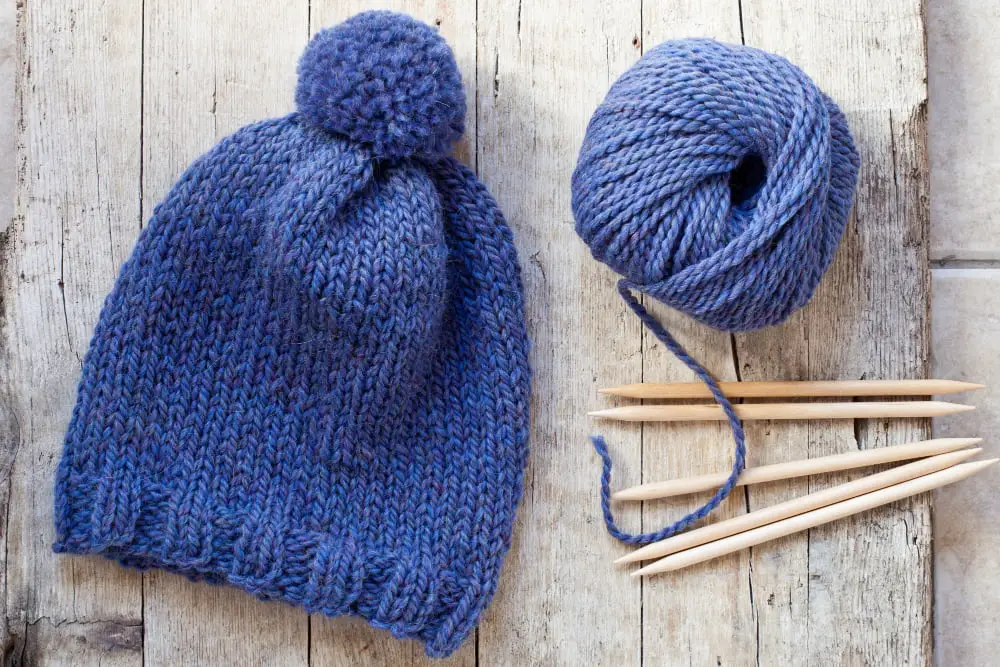
Yarn weight refers to the thickness of the strand. Light or fine weight yarns create a tighter, more intricate weave, perfect for a stylish, fitted beanie.
Medium or worsted weight yarns yield a denser, warmer hat, while bulky or chunky yarns are great for making oversized, slouchy beanies.
In terms of quantity, thinner yarns require more yards to complete a beanie compared to their bulkier counterparts. However, this also means that heavier yarns produce thicker stitches, increasing the overall size of the beanie, which may or may not align with the desired final product.
Choosing the right weight is more than just a matter of style. It also plays a role in the functionality and comfort of the beanie. Lighter yarns better suit temperate climates, while bulkier yarns offer more insulation for colder weather.
Remember that even a small change in weight can significantly impact the overall size and appearance of the beanie. Always consider the intended wearer’s preferences and the environmental conditions where the beanie will be used before settling on a yarn weight.
Crochet Hat Size Chart: Determination of Yarn Quantity
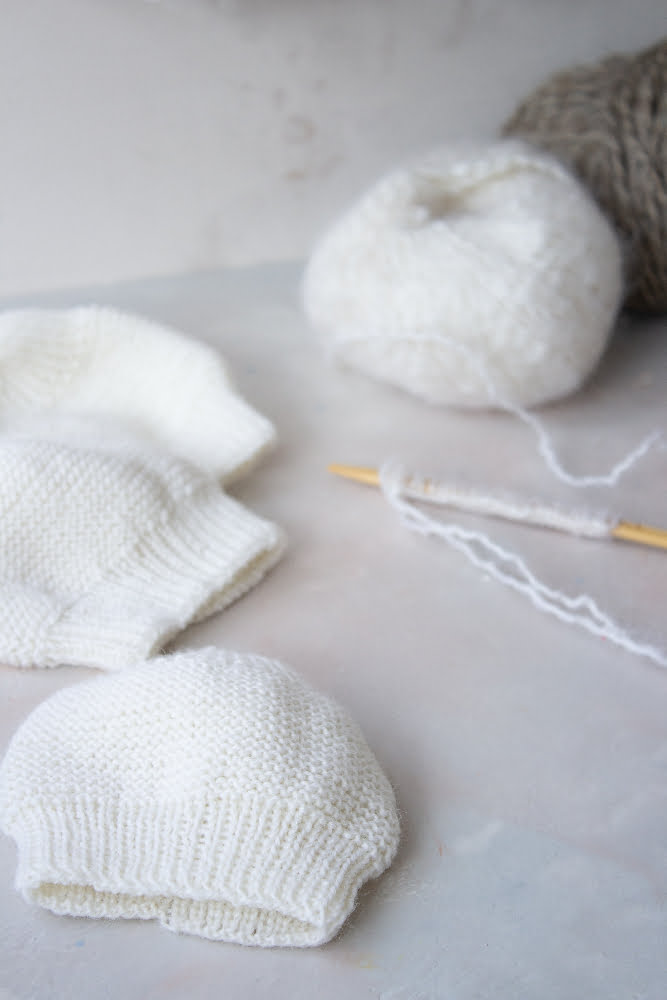
Naturally, the bigger the size of the beanie, the greater amount of yarn required. To accurately assess this, refer to a Crochet Hat Size Chart. In essence, these charts lay down typical head circumferences for different age groups, along with the suggested cap depth, and hat height.
Infants, for instance, usually require about 150-200 yards, while adults may require about 300-350 yards.
However, bear in mind, these figures can vary. Factors such as crochet tension – whether you crochet tightly or loosely, and the stitch used can impact yarn usage. For example, single crochet stitches consume less yarn than double crochet stitches. Test swatches can be beneficial in shedding light on your personal yarn usage pattern.
Also, remember that designs involving colorwork or texture tend to require extra yarn due to increased complexity.
Always ensure you overestimate yarn quantity slightly to avoid running out mid-project. It’s helpful to have a little yarn leftover rather than not having enough.
Best Yarn for Chunky Beanies: Making Your Selection

When opting for chunky beanies, a bulkier yarn is necessary. Wool is a favored choice due to its warmth, elasticity, and durability, while acrylic offers easier maintenance and is hypoallergenic. However, if softness is a priority, consider chenille or cashmere.
The yarn’s thickness will also affect the hat’s size, and bulky yarn creates larger stitches, giving the beanie a chunkier, cozier feel. Additionally, colors and patterns can add flair to your finished piece, so choose a yarn that caters to your aesthetic preferences. But remember, darker colors might make it harder to see your stitches.
Special Stitches in Crochet: Managing Yarn Use
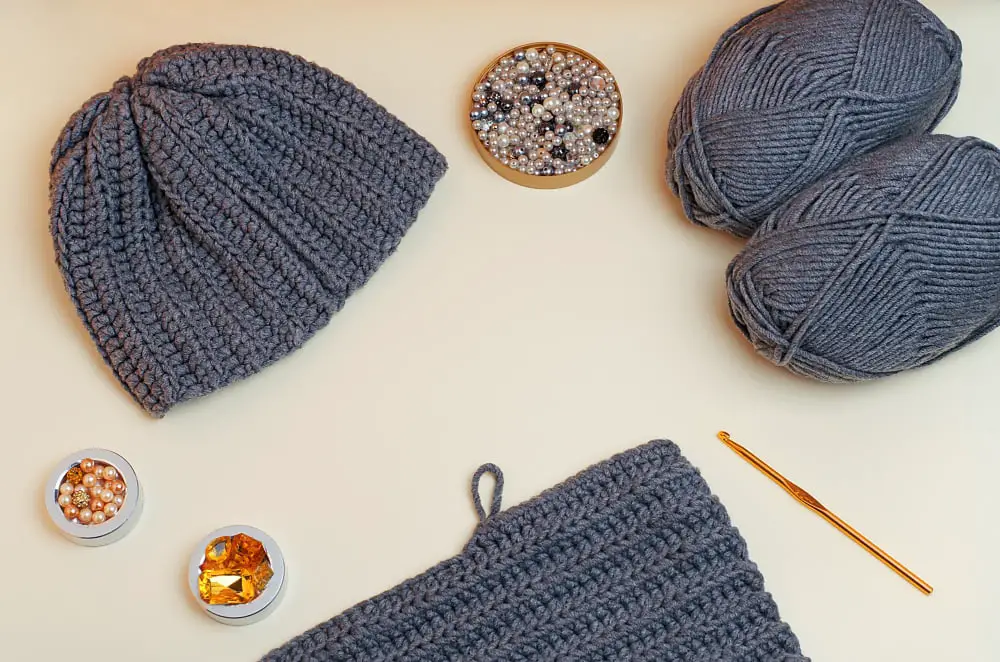
When crafting your beanie, consider that the type of stitch used can have a significant impact on your yarn usage. Traditional stitches like single crochet and double crochet are compact and tend to consume less yarn.
By contrast, more complex stitches, such as the bobble stitch or puff stitch, offer aesthetic appeal but require more yarn due to their dimensional nature.
Trellis stitch and shells stitch, while intricate, might strike a good balance between visual appeal and yarn usage due to their repeating patterns that build over continuous rows.
To conserve yarn, use a simpler stitch for the main body of your beanie, reserving decorative stitches for highlights or accent sections. Also, keep track of the yarn used for each row to maintain consistency and prevent running out of yarn halfway through your project.
Mastering tension control while crocheting can also ensure that you don’t use more yarn than necessary. An even, steady tension can help produce uniform stitches that efficiently use your yarn.
However, always remember that the ultimate goal is to create a personalized and unique beanie. Don’t feel constrained to sacrifice your creative vision just to save on yarn. There are always solutions like coupling short-length yarns or getting an extra skein if needed.
Essential Materials and Tools for Crocheting a Beanie With Correct Yarn Use
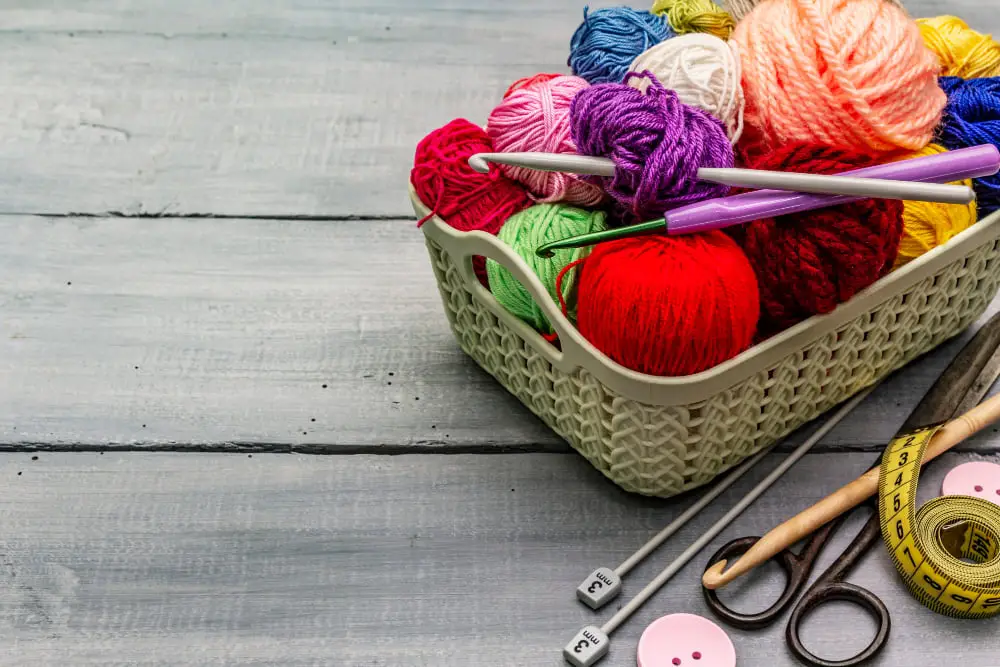
To start crocheting your beanie, a hook is indispensable. The hook size should be compatible with your yarn’s weight. Hooks range from 2.25mm (for lightweight yarns) up to 15mm (for super bulky yarns).
Acquiring a quality tape measure is also essential. This tool will assist in keeping your project dimensions accurate. It is vital to monitor the size of your crocheting work to match hat size specifications.
Another key material is a yarn needle. Once your beanie is crocheted, this needle is used to weave in loose ends of yarn and to add the finishing touches.
Also, consider buying a stitch marker. It helps keep track of the rounds or rows in your pattern, especially useful in complex designs.
Lastly, make sure to stock up on yarn. Abide by the recommended yardage on your pattern but get a tad extra to account for corrections or embellishments like pom-poms. It’s better to have a little more than to run short in the middle of your project.
These materials not only streamline your work but also ensure you use the correct amount of yarn at each step of the project, thus conserving your supplies.
Understanding Yarn Labels: Deciphering the Information

Labels on yarn packaging contain valuable information crucial for your beanie project. Look for the weight classification, it ranges from 0 (lace) to 7 (jumbo). This will guide you on the thickness of the yarn strand. Thinner yarn tends to require more yardage for a beanie than thicker strands.
The yardage, usually listed in meters or yards, tells you how much length is in a single ball or skein of yarn. This is key in estimating how many balls or skeins you’ll need for your beanie.
Pay attention to the recommended hook size. Using the correct size will help maintain the right tension throughout your project and avoid using more yarn than necessary.
Also, observe the care instructions, as different yarn types require different washing and drying methods. After dedicating time and resources to crochet a beanie, the last thing you want is for it to shrink or come apart due to improper care.
These are simple yet crucial details that can make all the difference in the final outcome of your crocheted beanie.
Calculating Yarn Yardage for a Beanie
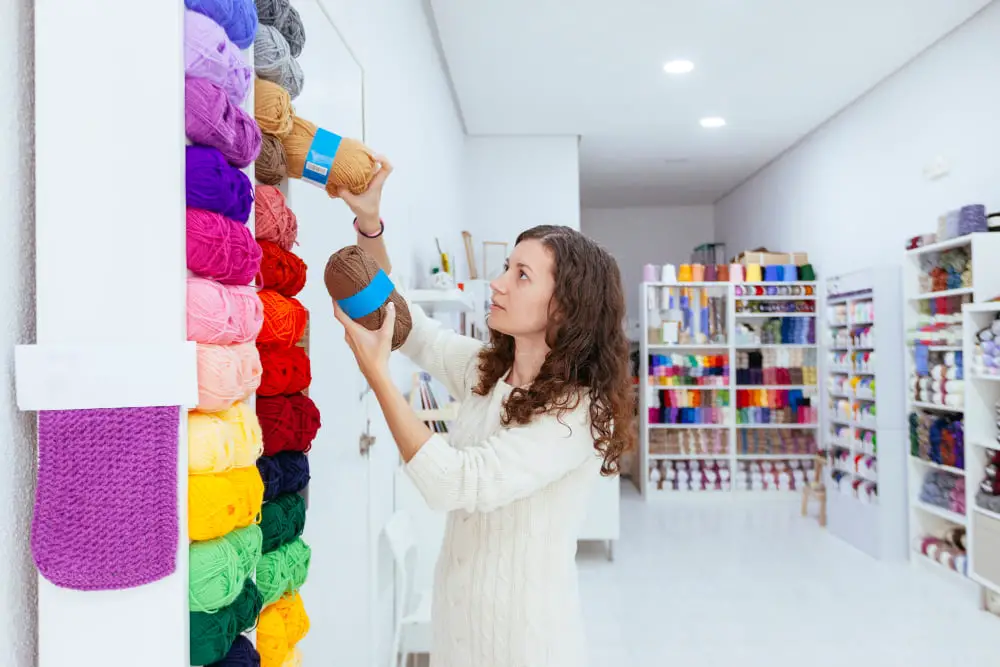
To accurately calculate the amount of yarn required, you first need to know the type of yarn you’ll be working with, as different yarn types can affect the overall size of the beanie. The weight of the yarn, from lightweight fingering to heavy worsted, can alter the amount used in one beanie.
For example, for a basic beanie using medium weight yarn, approximately 150 to 200 yards may be needed. On the other hand, if you’re using a heavier yarn you may only need around 100 yards. But, if you’re using lightweight yarn you could possibly need up to 300 yards.
Swatching is vital to accurately determine yardage. Create a small swatch with your chosen yarn and stitches, and measure it. Based on this swatch, yarn usage per stitch or row can be calculated. By combining this data with dimension details from a standard hat size chart, the correct yardage for a beanie of any size can be predicted.
Keep in mind that these estimations may vary based on factors such as chosen stitch and personal tension in crocheting. Always purchase a bit more yarn than calculated to account for these differences, and secure against running out towards the final row.
Tips to Save Yarn While Crocheting a Beanie
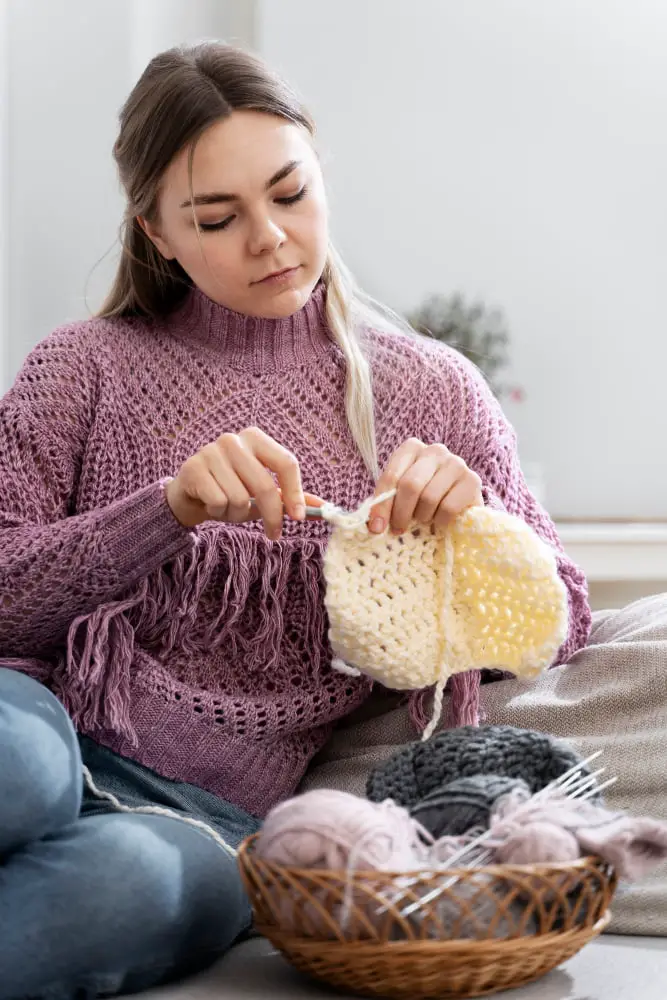
As you navigate through this journey, here are a few strategies you can adopt to optimize your yarn usage:
1. Use Only Required Stitches: Extra stitches consume more yarn. Stick to the stitch pattern and size indicated in the beanie pattern to avoid unnecessary wastage.
2. Keep Tight Stitches: Looser stitches not only require more yarn but may also lead to a loose-fitting beanie. By maintaining tension in your stitching, you can save yarn and create a well-structured hat.
3. Efficient Starting Chains: Make sure your starting chain is not excessively long. Additional chains equate to surplus yarn usage.
4. Splice Leftover Yarn: Rather than beginning a new skein of yarn, splice any yarn leftovers together. This technique is especially handy and efficient when working with yarns of the same color.
By embracing these tips, you’ll find that your yarn economy reaches a whole new level of efficiency.
Finishing the Beanie: Seam The Sides, Gather the Top, Attach a Pom Pom
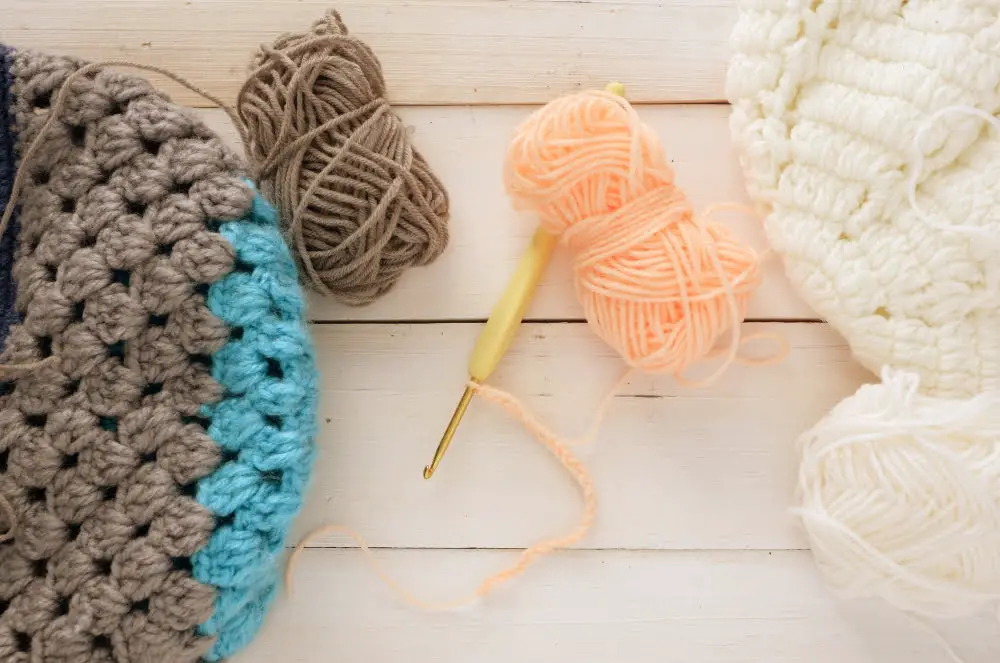
Seaming the sides of your beanie creates the snug fit essential for a good cap. Start by lining up your work edges evenly. Use a tapestry needle with a piece of yarn to weave in and out of the edges, pulling them together.
Gathering the top can be done by running a length of yarn around the final row of your beanie’s stitches. Simply pull tightly to cinch it closed. For added security, thread the yarn through the top stitches again and then tighten.
Affixing a pom pom adds a playful look to your beanie and helps use up leftover yarn. Remember to secure it well, especially if the beanie is for a child. You can either sew the pom pom directly onto the top of the cap or attach it with a button for easy removal during washing. Make sure to hide your yarn ends inside the beanie to maintain a clean finish to your work.
FAQ
Is one skein of yarn enough for a beanie?
In most cases, a single skein of yarn weighing around 3.5oz/100g is sufficient for creating a beanie, unless it’s a multi-colored or super slouchy design.
Is 100g of yarn enough for a beanie?
Yes, a 100g skein of yarn is generally sufficient for knitting or crocheting a beanie, albeit crochet may consume approximately 25% more yarn depending on the stitches used.
What can I crochet with 1000 yards of yarn?
With 1000 yards of yarn, one can craft versatile items such as shawls, wraps, and specifically lace shawls and granny square shawls.
How many yards of yarn are typically needed to crochet a child’s beanie?
Typically, crocheting a child’s beanie requires approximately 150 to 200 yards of yarn.
Can a slouchy beanie be crocheted with a 50g skein of yarn?
Yes, a slouchy beanie can typically be crocheted with a 50g skein of yarn.
What size of beanie can I crochet with 500 yards of yarn?
With 500 yards of yarn, you can crochet a beanie of approximately standard adult size (around 21-23 inches in head circumference).
